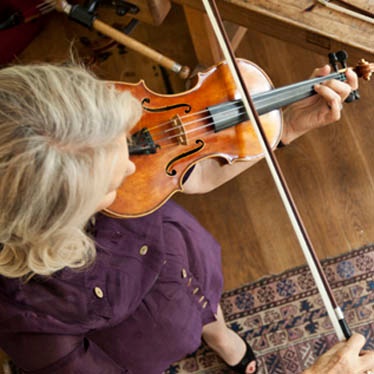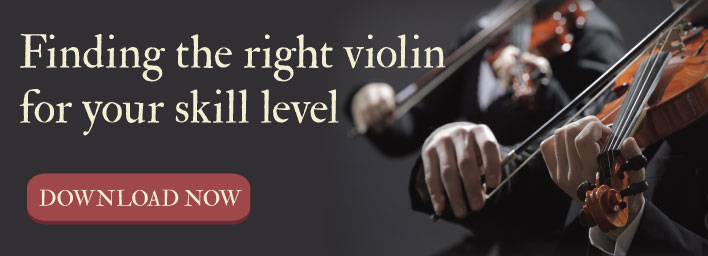Best Ways to Learn the Violin at Any Age

Then violin is a popular instrument that offers musicians endless performance possibilities. However, because it has a reputation for being a challenging instrument to learn, many misconceptions surround it, and people often think that if you want to learn to play violin, you have to start during childhood. They wrongly assume that if you don’t start when you’re very young, that learning violin will be too difficult. Nothing could be further from the truth.
Anyone can learn to play the violin, at any age. Mastering a new skill, regardless of what it is, always involves desire, discipline and determination; and learning violin is no different. Your age does have a factor in how quickly you’ll be able to adapt to the instrument. For instance, it may be easier for a child to embrace new concepts, but older students often have an advantage in the discipline department. The key is to find the best way for you to learn to play violin, no matter your age.
Everyone learns differently. Some people benefit from hands-on activities, while other incorporate information better through reading or listening. The techniques used for learning violin are wonderfully flexible, and able to adjust according to your particular learning style or preference. Therefore, finding the best way to learn is a personal choice. One which, if you take your time, will create an atmosphere that will make it easier for you to become proficient. These fundamental steps can be adjusted to meet your particular needs, regardless of your age.
Choosing a Learning Style
The primary learning style that you choose will influence your overall success and enjoyment. For beginner violin students, it’s very important to pick a style that you are comfortable with, so that you will be enthusiastic about learning and practicing. Like all worthwhile skills, practicing forms an essential part of the learning technique, so you’ll want to choose a method that makes it fun.
Fortunately today, there are a number of ways available for learning violin. Beginner students can choose a personal instructor, attend a class, or use an online method, and each one of these options offers different benefits and advantages.
- Personal instruction—finding a local educator in your area to teach you the fundamental concepts can be a good choice if hands-on help is important. In fact, this is the traditional method for a reason. It is effective for most beginner violin students. However, this isn’t necessarily the best choice if you need more flexibility. You can find a great instructor by visiting your local instrument shop to make inquiries or by using an online database to search in your area. Also, the American String Teachers Association (ASTA) has a “find a teacher” option that can help you narrow your search.
- Online Courses and Software Programs—If your schedule makes it difficult for you to attend “formal” learning sessions and you are a motivated self-learner, an online instructional course may be the answer. There are many, effective options available online that feature videos, books, and even chat help for beginner violin students. Violinlab and Fiddlerman are just a couple of the options available. Moreover, you can purchase software programs that are specifically designed for very young students. These include games and other activities that introduce musical concepts using age appropriate characters and similar fun methods.
- Group Classes—These are typically conducted at public service facilities like schools and community centers. Group classes offer the benefit of engaging with other students, which is an important part of learning violin. The key to remember is to find a method that meets your particular needs. That way, you can get the most from the learning system you’ve selected.
Practicing “Musts”
Practicing is one of the most important factors in learning violin. However, the way you practice has a huge influence on your progress. Recent studies have shown that deliberate practice, focusing all of your mental and physical abilities, is more effective that simply ‘going thought the motions’ without conscious thought. No matter your age, the best way for beginner violins students to learn involves developing deliberate practice techniques.
Find Additional Tools and Resources
It’s also helpful for beginner violin students to embrace additional resources for learning violin. There are tons of great violin apps available to assist your learning process. You can find games that help you learn music notation, improve your intonation, and increase your bowing skills, and many of these tools can help you when you don’t have your instrument with you.
The best way to learn the violin is a highly personal choice, depending on your individual tastes and learning preferences. By choosing methods, practice techniques, and tools that work for you, anyone can learn to play the violin, regardless of how old you are when you start.


